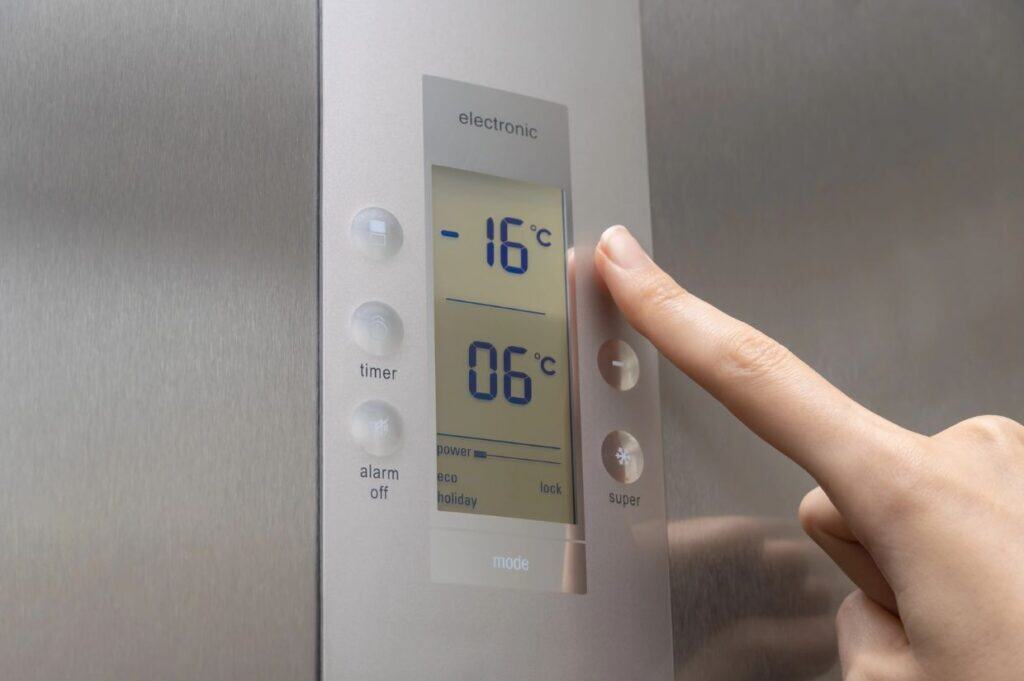As energy costs climb and food prices stay high, more households are rethinking how they use their appliances. The ideal temperature settings for your freezer and refrigerator play a crucial role in food preservation and energy savings, yet many homes still fall short. Fine-tuning those adjustments cuts costs and keeps food fresh, making it a practical change with real impact.

Cooling problems often go unnoticed, but they accelerate spoilage and raise the risk of foodborne illness. Inconsistent temperatures also strain appliances, reducing efficiency and shortening their lifespan. It’s not just about setting a number; how well your fridge and freezer cool makes a huge difference.
USDA-approved temperature range
The United States Department of Agriculture advises keeping the refrigerator at or below 40 degrees Fahrenheit. This helps slow bacterial growth and prevent foodborne illness. An appliance thermometer is recommended for refrigerators without built-in thermometers to monitor the temperature. While 37 degrees Fahrenheit is generally safe for most items, some fresh produce may still experience chill damage if stored too close to freezing.
Freezing at zero degrees Fahrenheit halts bacterial and mold activity but does not kill pathogens. Once thawed, some bacteria may still pose a risk if food isn’t cooked properly. Anything warmer than that increases the chance of spoilage or foodborne illness. And if you’re still relying on the fridge’s default setting, it’s worth checking. Factory presets don’t always align with reality, and internal temperatures can vary based on load and usage.
Accuracy keeps food safe
Refrigeration slows bacterial growth only if the temperature stays below 40 degrees Fahrenheit. That threshold is considered the danger zone, where microbes multiply rapidly. A fridge running even a few degrees too warm can increase the risk of salmonella, listeria and other foodborne illnesses.
Freezers set at zero degrees Fahrenheit prevent further microbial growth but don’t kill existing bacteria. That’s why thawing and reheating protocols still matter. Keeping a freezer colder than zero degrees will not improve food safety and can increase energy consumption and stress the appliance.
The right temperature settings in both compartments support food safety and nutrition. Nutrients in fresh produce and meats degrade more slowly when stored consistently at safe temperatures. Blueberries stay plump, spinach stays crisp and salmon remains safe to eat.
Detect cooling issues early
Unusual freezer frost or sagging ice cream may look minor, but they often signal bigger problems with appliance performance. Thick frost usually points to a setting that’s too low or a faulty door seal letting in warm air.
On the other hand, soft or partially thawed frozen food suggests temperatures are creeping too high. Condensation along shelves or walls is another red flag, often tied to poor airflow or uneven cooling. Addressing these warning signs quickly helps prevent spoilage and keeps appliances from working harder than they should.
Use the right thermometer
Knowing the internal temperature becomes critical during a power outage. Food should be thrown out if it sits above 40 degrees Fahrenheit for more than two hours. Built-in dials with settings from one to five rarely reflect the actual temperature inside. These basic dials often give the impression of precision but seldom match the correct internal temperature.
A dedicated appliance thermometer provides more reliable readings and costs just a few dollars. Placing it on a middle shelf near the door captures the warmest part of the fridge, which helps catch temperature spikes early. Checking it weekly or whenever food seems off can flag issues before they lead to waste or costly repairs.
Store food wisely
Efficient cooling relies on how storage space is managed. Poor food placement can block airflow and cause internal temperatures to rise above safe limits. When items crowd shelves or block interior vents, cold air circulation stalls and food quality suffers.
Storing raw meat on the lowest shelf minimizes risk by preventing cross-contamination. Dairy and eggs belong in the center zone of the fridge, not in the door where temperatures shift with every opening. In the freezer, sorting items by category helps shorten door-open time, which protects against gradual warming and frost damage.
Adjust based on conditions
Frequent door opening after large grocery hauls drives internal temperatures upward. Adjusting the thermostat temporarily can help the unit recover more quickly under heavier use.
In warmer months, hotter kitchen temperatures put more pressure on fridge and freezer performance. A small setting change can offset that heat load. After a power outage, verifying that food stayed at or below 40 degrees Fahrenheit is essential. Perishable items that exceeded that threshold for more than two hours should be discarded to avoid the risk of getting sick from harmful bacteria that may have developed.
Keep appliances in shape
Regular upkeep improves appliance efficiency and helps maintain safe food temperatures. Dust-covered condenser coils make the unit work harder and burn more energy, so cleaning them every six months helps prevent long-term wear. Chest freezers or older models should be defrosted if ice buildup exceeds half an inch, since excess ice can trap heat and slow performance.
Door seals matter too. A loose gasket leaks cold air and forces the compressor to run longer than needed. Closing a dollar bill in the door is a quick test. If it slides out without resistance, the seal likely needs replacing. Small maintenance steps like these help protect both cooling power and lifespan.
Safe habits pay off
Getting refrigerator and freezer settings right goes beyond personal choice. It’s a science-based way to cut waste, lower bills and protect health. Thermometers, good airflow and steady maintenance help boost food safety and appliance efficiency. Consistent small steps keep food fresh and households safer.
Zuzana Paar is the creator of Sustainable Life Ideas, a lifestyle blog dedicated to simple, intentional and eco-friendly living. With a global perspective shaped by years abroad, she shares everyday tips, thoughtful routines and creative ways to live more sustainably, without the overwhelm.
The post The ideal temperature settings for your freezer and refrigerator appeared first on Food Drink Life.



